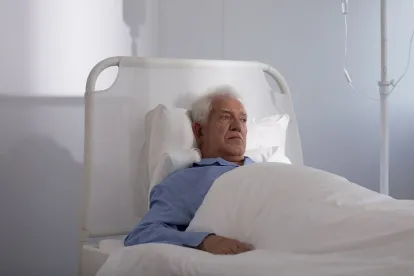Bedsores, also known as pressure ulcers, are an all too common occurrence in nursing homes and extended care facilities. The Federal Government has made a determination that “bedsores,” should not happen in nursing homes. See 42 C.F.R. 483.25(b)(ii) (stating “a resident . . . does not develop pressure sores unless the individual’s clinical condition demonstrates that they were unavoidable.”)
Those who are in a nursing home or extended care facility are usually there because there is a need for care beyond what can be provided at home. Elderly patients are especially prone to these potentially life-threatening sores, given their age, lack of mobility, thinner skin, and medical issues. However, bedsores can often be prevented with the right care plan in place. Their occurrence can be a sign of nursing home neglect.
A variety of factors can contribute to the development of pressure ulcers, but they are overwhelmingly due to prolonged pressure on a certain area of the body. Typically they’re seen on areas affected by extended time in one position, including the lower back, heels, hips, and tailbone. The odds of a bedsore developing increases with dehydration and malnutrition, as well as extended exposure to moisture, such as from feces or urine.
In a nursing home, it’s the responsibility of caregivers to make sure residents are receiving proper care, including regular repositioning, adequate nutrition, and daily changing of clothing. These are all part of taking a proactive approach to prevent dangerous bedsores. Not only are bedsores painful, they can also lead to serious outcomes including sepsis, surgery, or death.
The National Pressure Ulcer Advisory Panel has created a system to determine how severe a bedsore is, with a scale of 1 to 4:
-
Stage 1. The skin is not yet broken, but it appears red or discolored. It can often be warm or hard to the touch and doesn’t lighten or change color when you press on it.
-
Stage 2. The skin is broken and there is a shallow sore.
-
Stage 3. The sore has extended past the dermis level and has progressed to the fatty tissue below it.
-
Stage 4. The wound has extended into the muscle and possibly the bone.
If there are any indications of a Stage 1 bedsore, the facility should take immediate measures to prevent it from becoming any worse. As the sore progresses, the time and care for recovery increases, as does the risk for serious complications. As part of diligent care, providers should take note of any areas of concern to address them before they become a problem, especially in scenarios where residents are unable to communicate their discomfort.
When you trust a nursing home to take care of your loved one, you want to make sure their care and safety is a priority. Preventative measures should be in place to prevent bedsores and in the event one does occur, it’s important they’re noted and taken care of right away.


 />i
/>i

